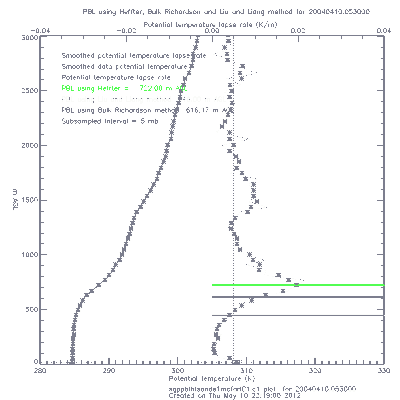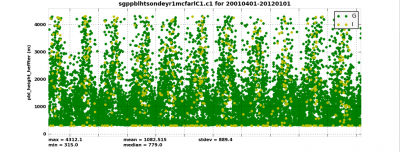Value-Added Product Estimates Planetary Boundary-Layer Height from Radiosondes
Published: 12 September 2013

The planetary boundary-layer (PBL) height (or mixing-layer depth) can vary significantly with time due to a number of factors including large-scale dynamics, cloudiness, convective mixing, and the diurnal cycle of solar radiation. The structure and depth of the PBL is important to a wide range of atmospheric processes including cloud formation; aerosol mixing, transport, and transformation; and chemical mixing, transport, and transformation. The data for a new ARM value-added product (VAP) that estimates PBL height from radiosonde measurements (PBLHT) are now available at the ARM Data Archive for all sites.

The VAP implements three different methods for estimating PBL height. Two methods involve gradients in the potential temperature profile, while a third method is based on the profile of the bulk Richardson number. One of the methods also classifies the PBL into regimes (stable, convective, or neutral). The differences among estimates from the various methods can be considered a partial estimate of the uncertainty in the PBL height values. The VAP produces both detailed files for each radiosonde launch and annual summary files containing a time series of PBL height over the year.
More information is available at the VAP web page. To access these data, log in to the Data Archive. (Go here to request an account.)
The ARM Climate Research Facility is a DOE Office of Science user facility. The ARM Facility is operated by nine DOE national laboratories, including .
Keep up with the Atmospheric Observer
Updates on ARM news, events, and opportunities delivered to your inbox
ARM User Profile
ARM welcomes users from all institutions and nations. A free ARM user account is needed to access ARM data.


















